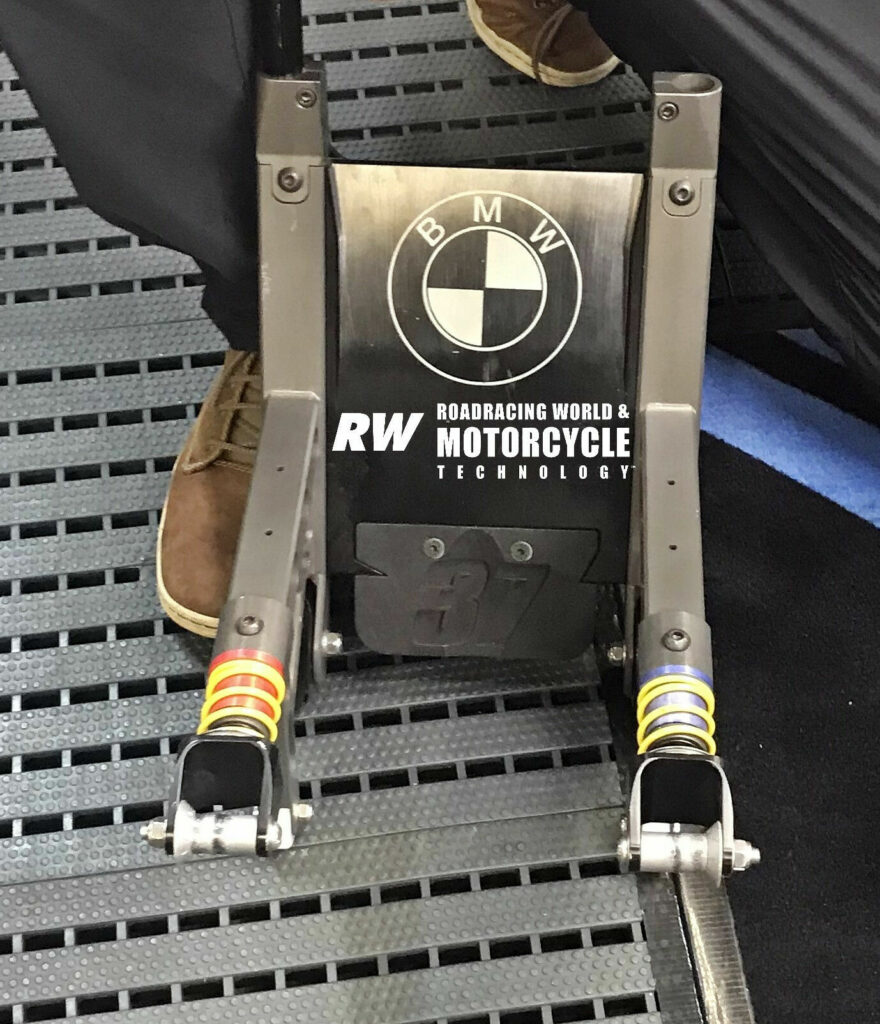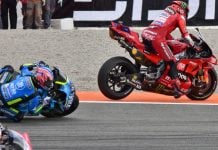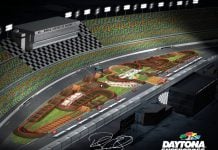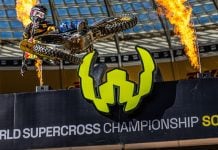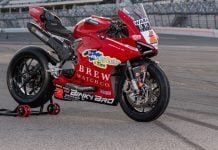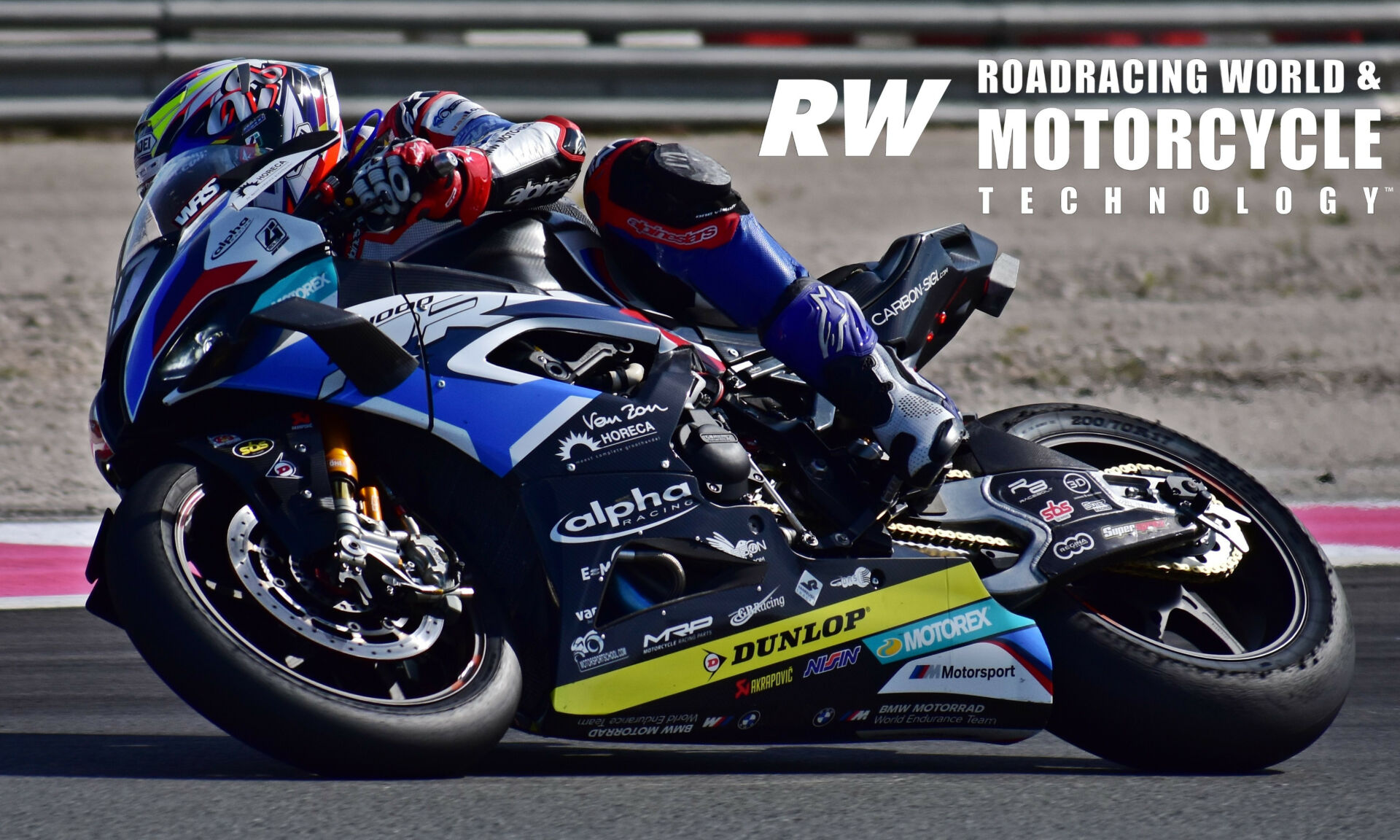Copyright 2022, Roadracing World Publishing, Inc.
by Michael Gougis
The record top speed for a Superbike World Championship machine is 330.3 kph (205.24 mph), set by Chaz Davies aboard a factory Ducati Panigale V4 R at the 2020 Philip Island WorldSBK round.
Official timing and scoring clocked the quickest of the Endurance World Championship machines at more than 345 kph (214.37 mph) at the 2021 Bol d’Or. That’s in race trim for a bike designed to last 24 hours.
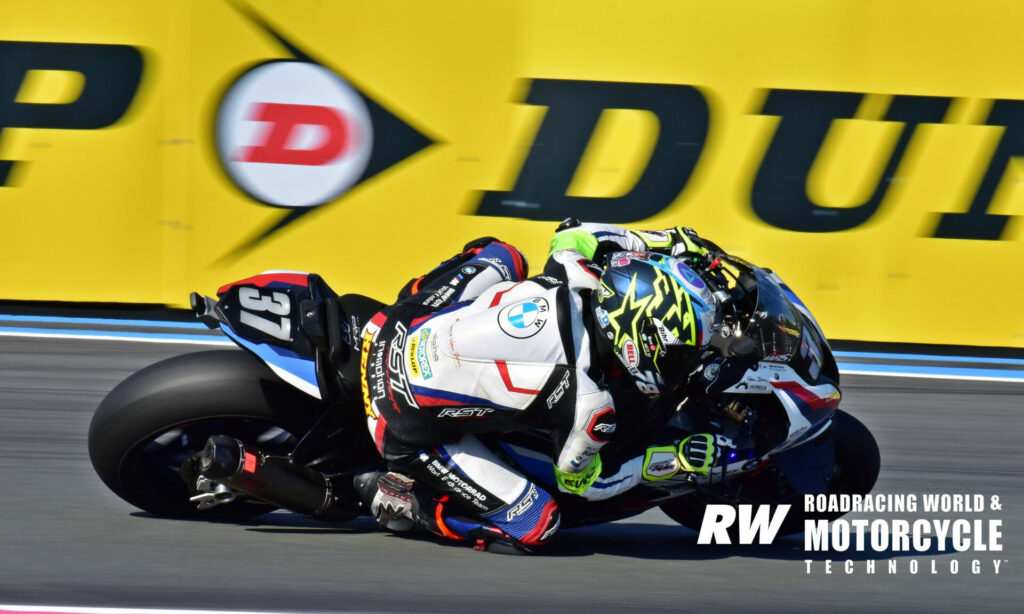
On the 1.1-mile Mistral straight, the motorcycles spent nearly 20 seconds with the throttle at the stop, with approximately 12 of those seconds in sixth gear right at redline. The leading machines did this nearly 700 times during the race. If you ride track days or race a literbike, think about how long you spend on a typical lap at any racetrack in sixth gear at redline, and you start to grasp the enormity of that statistic.
Point is, a modern EWC machine isn’t built just to survive. It is built to be easy to ride, a compromise between multiple riders, durable, all of that, yes, yes, yes.
But a front-running one is a legit missile.
And it’s not built of unobtanium.
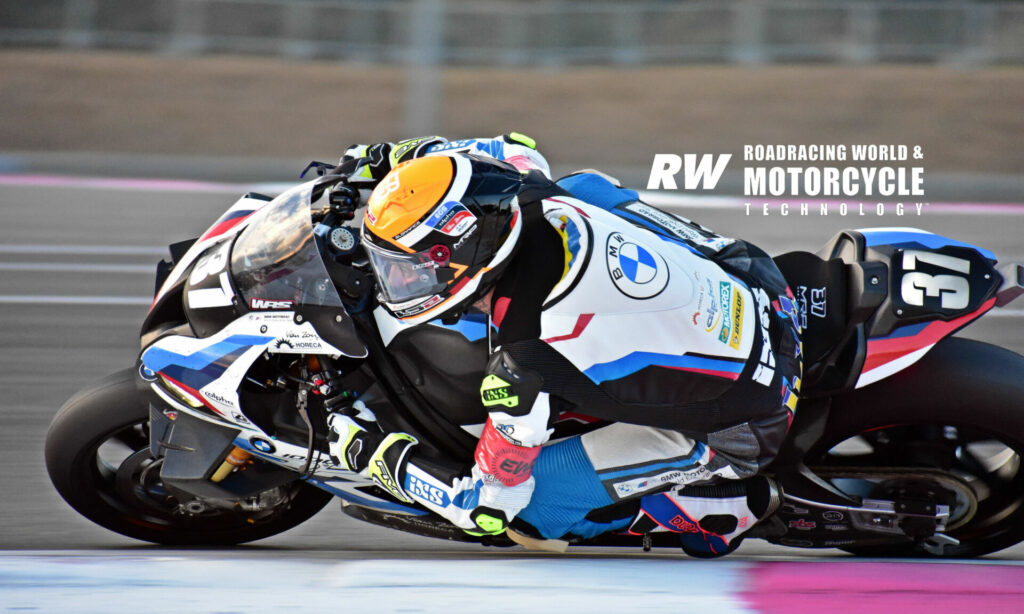
BMW’s approach to racing is somewhat unique. The company literally races what it sells through official partner Alpha Racing, and almost all of its EWC-spec factory M 1000 RR racebike is either directly from the M 1000 RR streetbike or a customer racing component.
Steven Casaer, Technical Director for the BMW Motorrad World Endurance Team, gave Roadracing World an in-depth look at the EWC racebike as the team prepared for the 24-hour Bol d’Or at Circuit Paul Ricard.
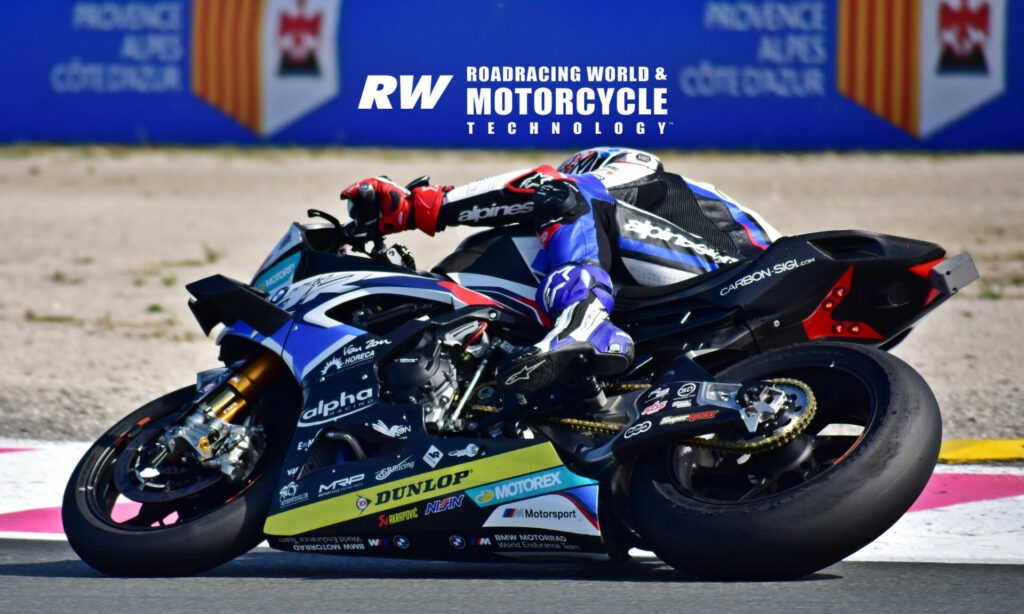
While the team retired early in France due to an engine malfunction, redemption came a few short weeks later in the six-hour EWC season-ender at Autodrom Most in the Czech Republic. Again, and just to illustrate that these bikes are legit, the fastest qualifying time for the BMW EWC squad would have put it 13th on the grid in the WorldSBK event at the same circuit a couple of months earlier. And the EWC machine didn’t have a special one-lap qualifying tire like the WorldSBK bikes did.
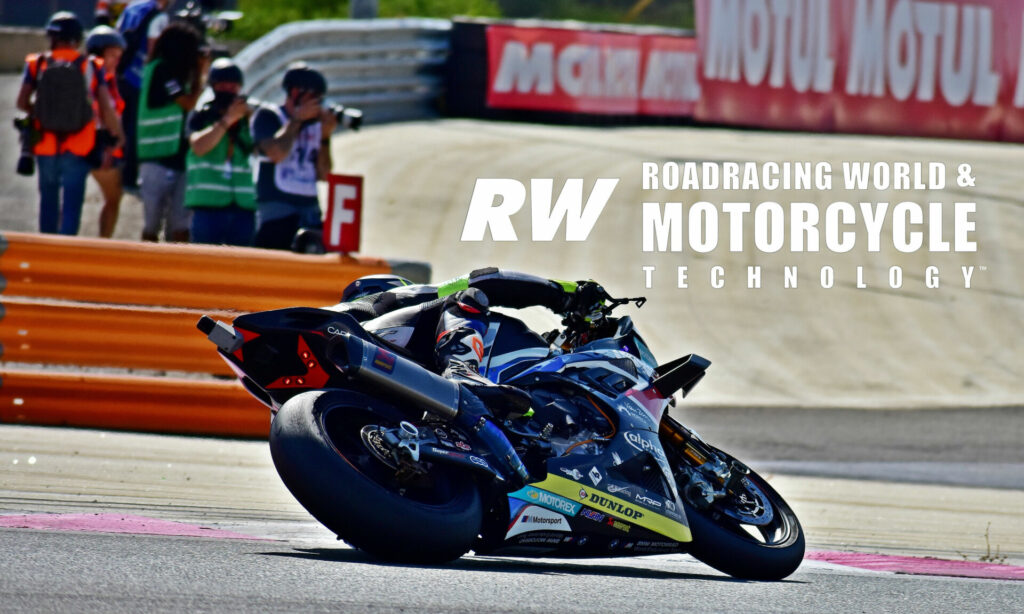
The BMW team held the lead for most of the six hours, and Markus Reiterberger held off YART’s Marvin Fritz to win by 0.070 seconds, scoring BMW’s first EWC win and securing second in the Championship for the squad.
Over-The-Counter Parts
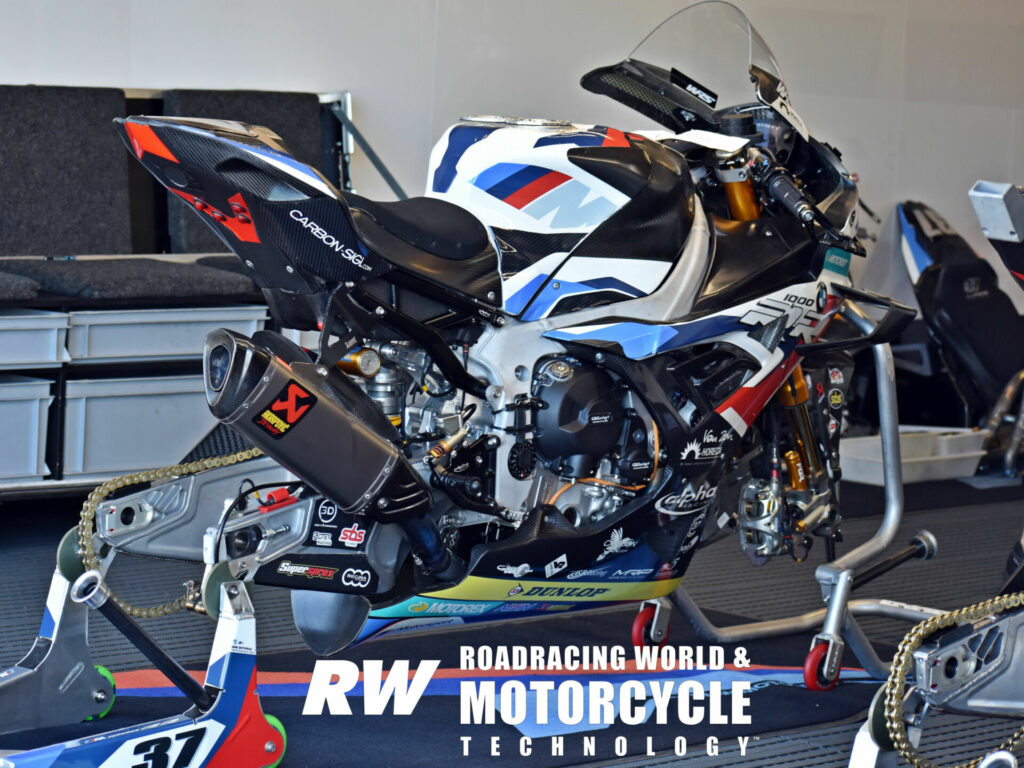
Easiest to think of the $32,495 M 1000 RR, BMW’s latest high-end race replica, as the starting point. The EWC machines are built at the Motorsports Racing Parts and Tires facility in Zonhoven, Belgium, under the direction of Team Manager Werner Daemen and Casear. The team starts with a bare M 1000 RR frame; “It’s cheaper that way,” Casear says. At the front, an Alpha Racing steering stem and triple clamps are bolted to a set of Öhlins FGR forks from the company’s carbon-fiber-framed HP4 Race. “There are dust seals and everything,” Casear says. “You can buy them straight from BMW.”
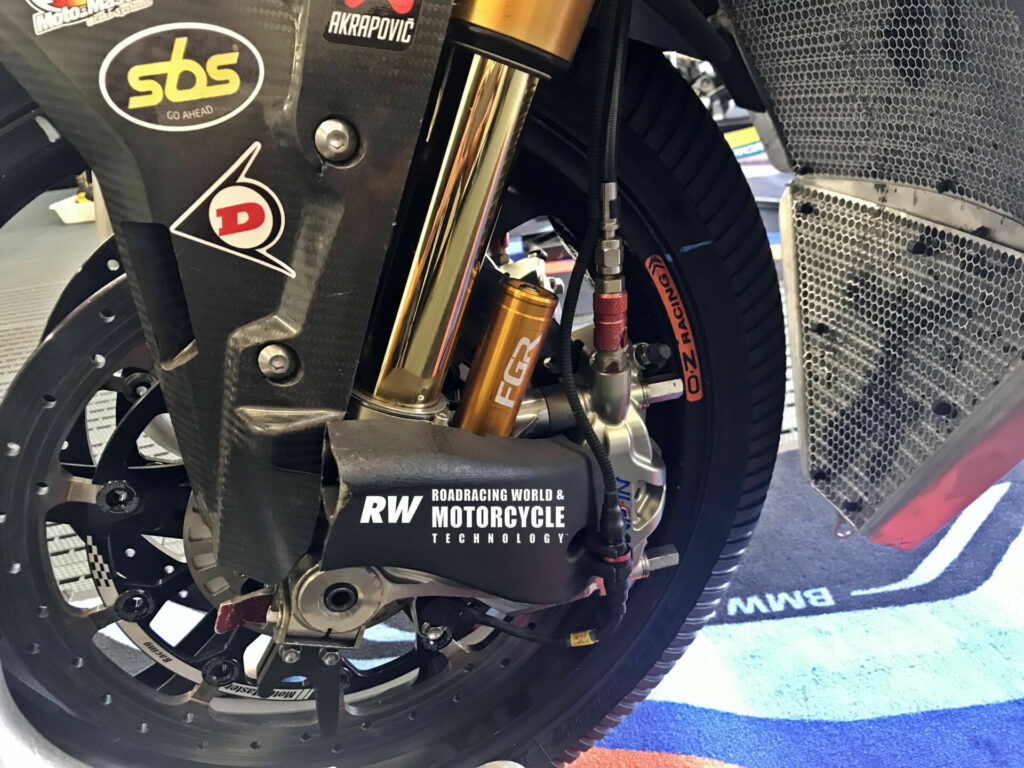
At the rear is an Alpha Racing subframe and a basic Öhlins TTX36 shock, chosen for its relatively low cost, mated to a Suter World Superbike-spec swingarm with quick-change ramps to guide the rear wheel bearings during pit stops. (Swingarms are expensive bits of kit. The basic Suter WorldSBK piece, which is available over the counter, lists for more than $7,000, and it requires an “assembly kit” that is an additional $1,600.) BMW opted for a quick-change system that leaves the sprocket attached to the wheel during stops.
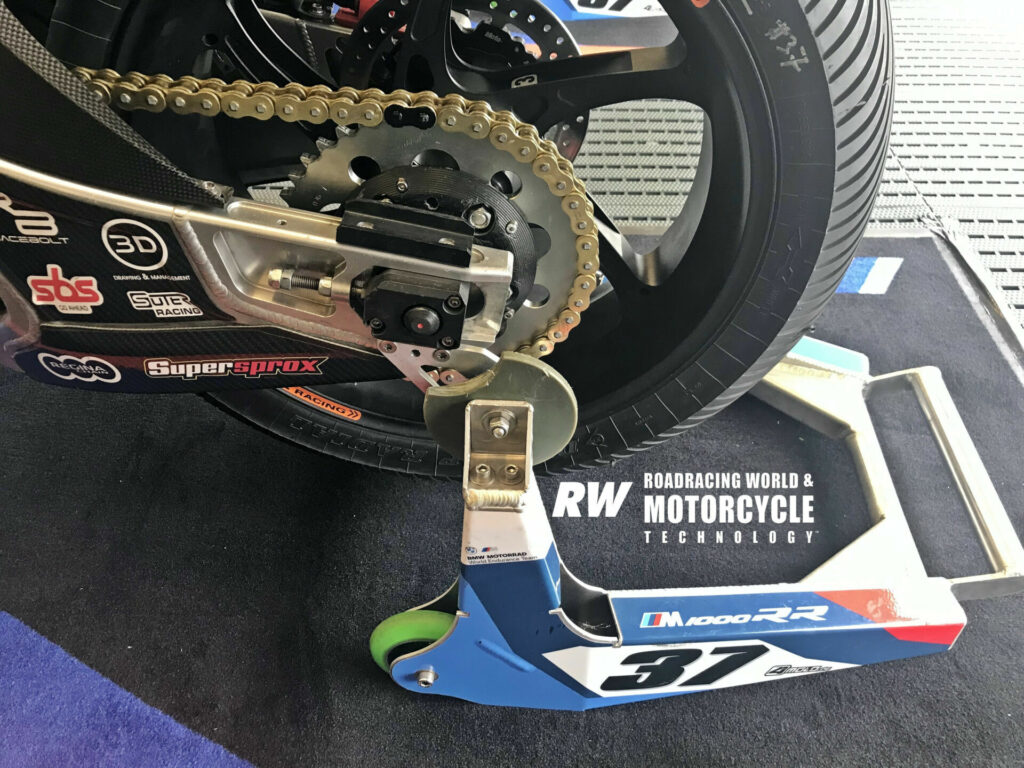
OZ Racing wheels are mounted front and rear, as are MotoMaster discs, 5.5mm at the front – there’s no need for thicker discs as the wheels are changed hourly and rotors can be replaced at the team’s leisure between stops. The Nissin endurance-spec calipers at the front are slightly larger than normal to hold thicker pads, developed by SBS with the team. (Riders are forbidden to use the rear brake during races, Casear says, as changing those pads simply takes too long.) Front brake replacements, as necessary, are speeded by dry-brake fittings in the braided hoses.
The engine is an off-the-shelf assembly available to anyone who contacts Alpha Racing and is willing to part with $18,925, plus shipping. The K66-ENGTYP6 engine is essentially a stock M 1000 RR powerplant, which is upgraded from the base S 1000 RR with lighter titanium connecting rods, 1.5mm thinner rocker arms, a cylinder head with reinforced bearing brackets and lightened, forged two-ring racing pistons. Taleo radiators are mated to shortened stock hoses. A full titanium Akrapovic exhaust system completes the engine package. Output is a claimed 212 bhp.
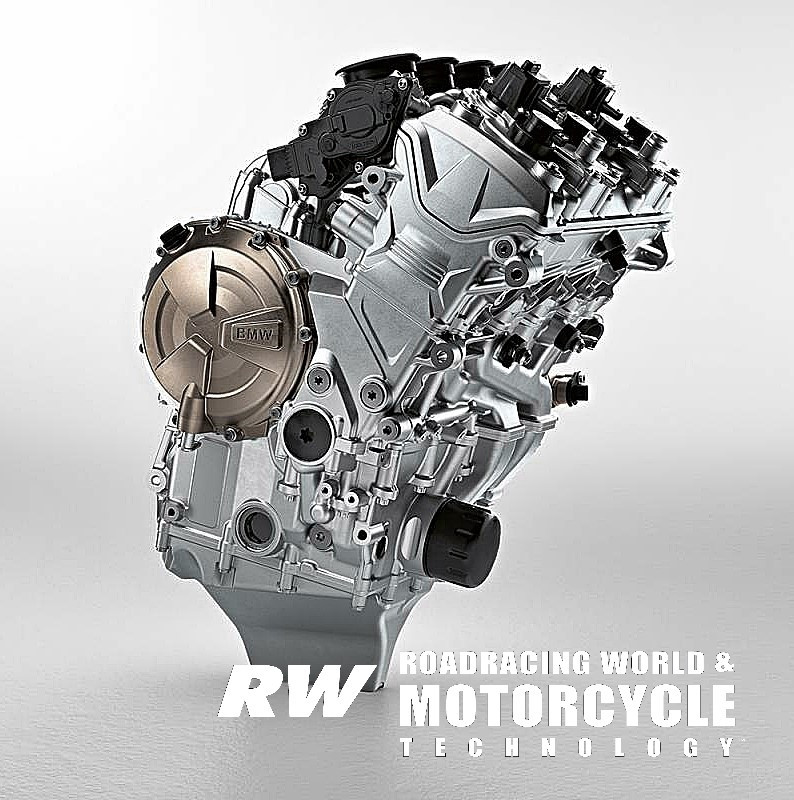
One critical element is its assembly. Parts are chosen by hand at BMW’s engine and dyno center in Berlin and each engine is assembled by hand. One of the biggest differences in the engine bay between the M 1000 RR and the racebike is the transmission. The EWC gearbox has even closer ratios than the WorldSBK spec transmission, a much taller top gear and clutch plates made to a more durable specification. (Gearing is critical at Paul Ricard, as the faster bikes “skip” from the draft of one bike to the next multiple times on the run down the long back straight.) EWC rules require transmissions to have neutral between first and second gears, as opposed to a WorldSBK gearbox with neutral below first.
The brains of the machine are found in the M RCK (Race Calibration Kit) package, available from Alpha Racing for approximately $6,832.80. At the core of the kit is the Bosch Motronic BMSM2 ECU, but you also get the MoTec C125 dashboard, racing handlebar switches and MoTec datalogging software. The kit deletes the ABS capability and other street-oriented functions and allows the electronics engineer to create up to 64 different power modes, with different traction control, engine braking and wheelie control settings available for each gear. Traction control and engine braking are set to pre-determined ideal rear wheel slip targets. All TC intervention takes place with ignition cuts to ensure that the rider can hear that the system is operating. The system also allows for split throttle body action, so that pairs of cylinders can be operated independently, smoothing throttle response right at the moment the rider cracks the throttle.
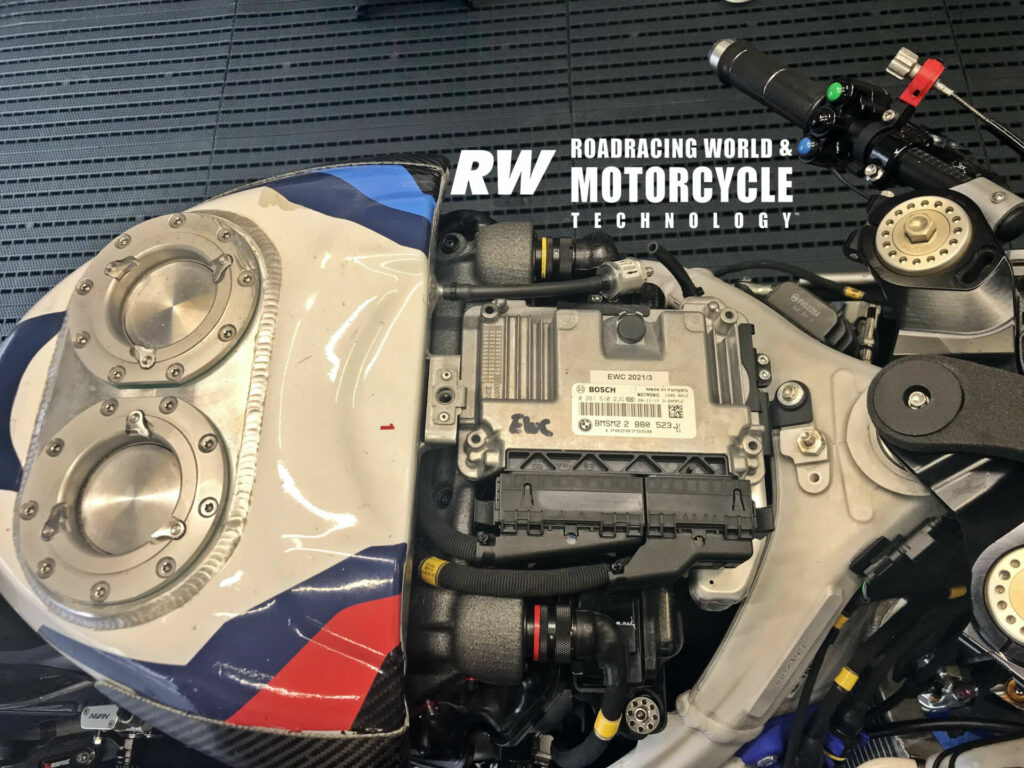
Little things make a significant difference over endurance race lengths. BMW developed a special 525 chain for the M 1000 RR that the team ran for the entire 24 hours at Le Mans with zero stretch. GB Racing case covers protect the engine during a crash, and Alpha Racing clip-ons are replaceable without removing the fork or upper triple clamp.
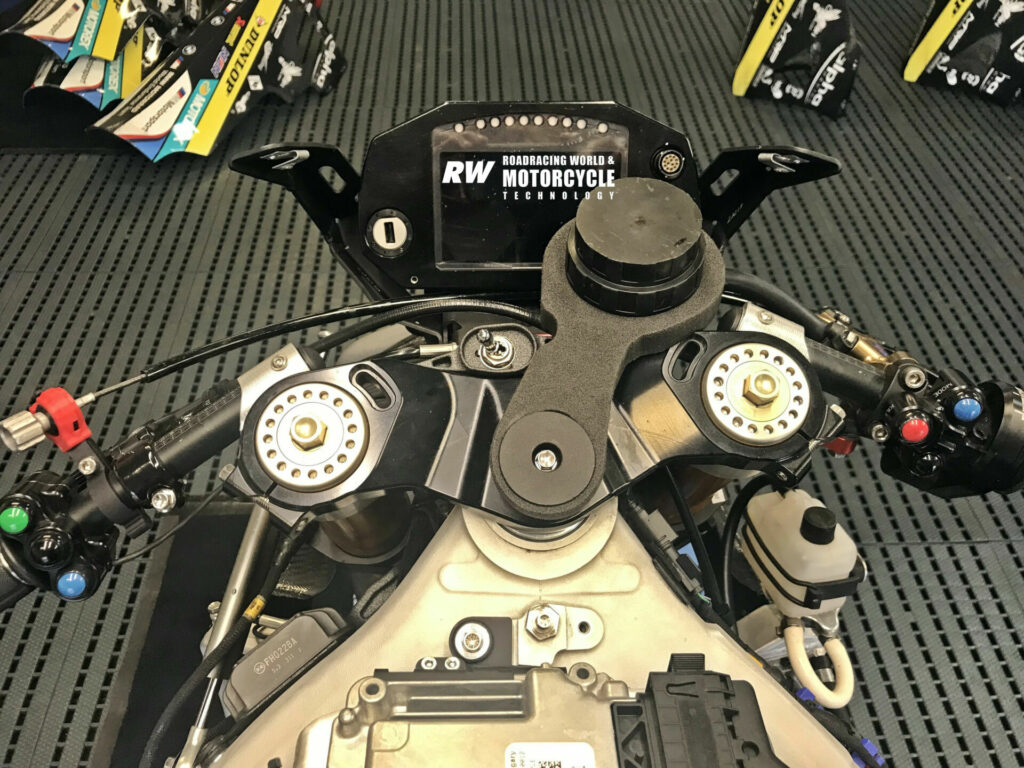
Top the whole thing off with an EWC-spec long windscreen and carbon-fiber bodywork with WorldSBK-configuration wings and you’ve got the basics of a bike that, as the team has shown, can run with the best of the EWC machines.
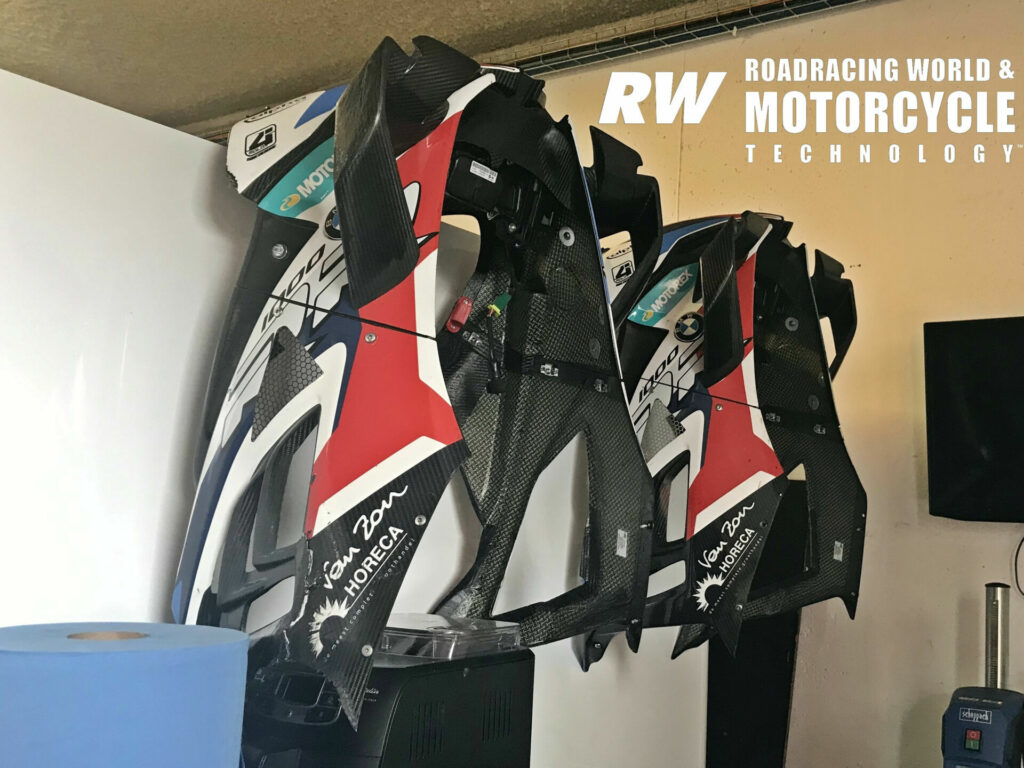
Special Parts
As always, on a factory bike there are parts that aren’t available to anyone else. With the BMW team, it’s little things that make a difference.
The 24-liter tank, for example, has a conventional dual dry-break filling system, but has been modified extensively internally with baffles and separators to ensure that the tank fills as rapidly as possible and that all 24 liters can be used.
The footpegs have a special brace behind them that butts up against the swingarm and, in a crash, prevents the rearset brackets from exceeding their plastic (permanent) deformation point.
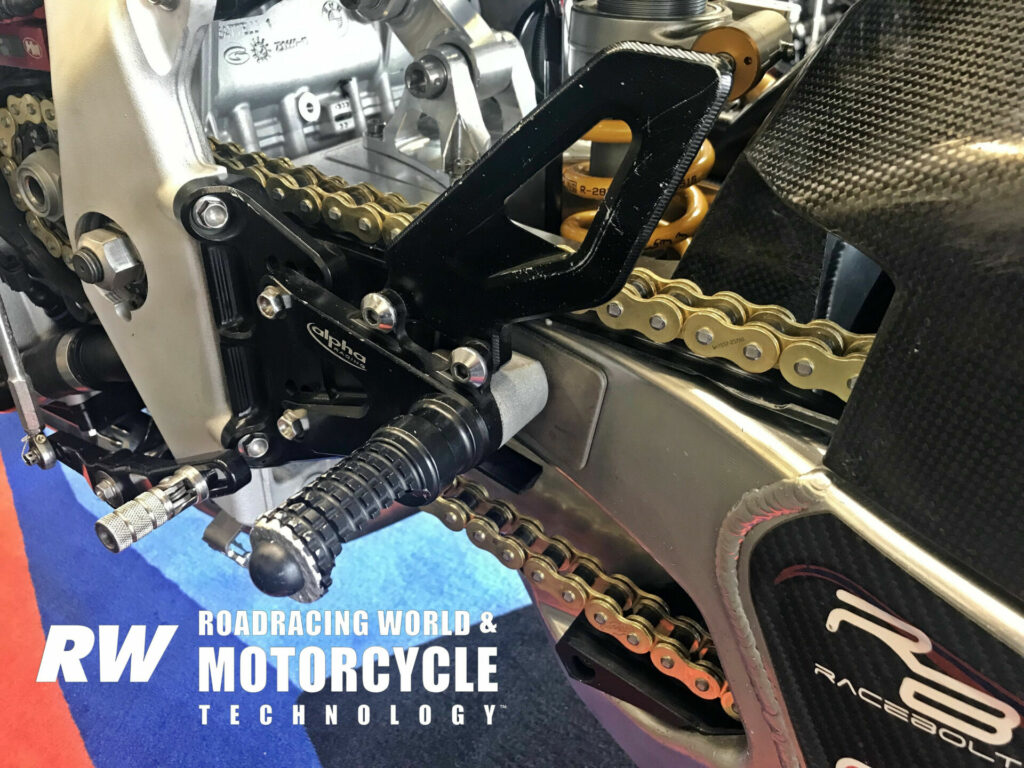
One of the most important things the team does by itself is create bespoke wiring harnesses with additional quick-release connectors, allowing for rapid replacement of parts after a crash.
And as always, there are tires. Dunlop supplies development tires to its factory teams, and BMW has a choice of development- and standard-spec KR106/KR108 radial slicks.
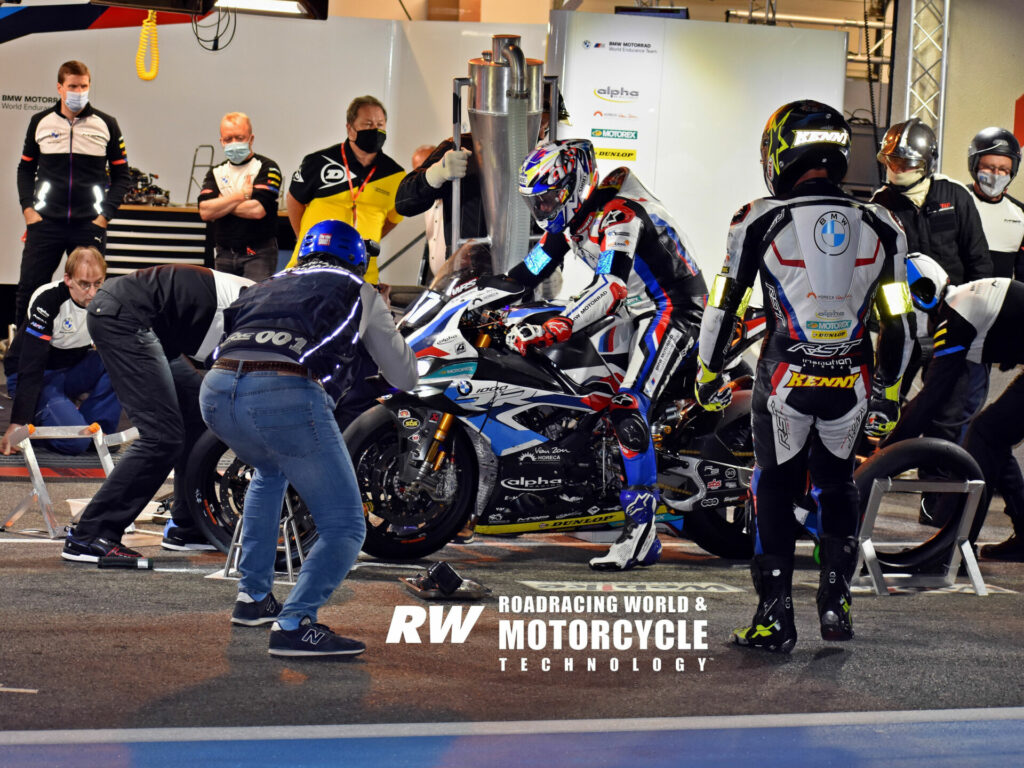
The big difference between the factory and privateer bikes? Resources. For example, BMW brought three bikes to the Bol, let all three riders test all three bikes at a pre-event test, and reached a consensus on which bike to race.
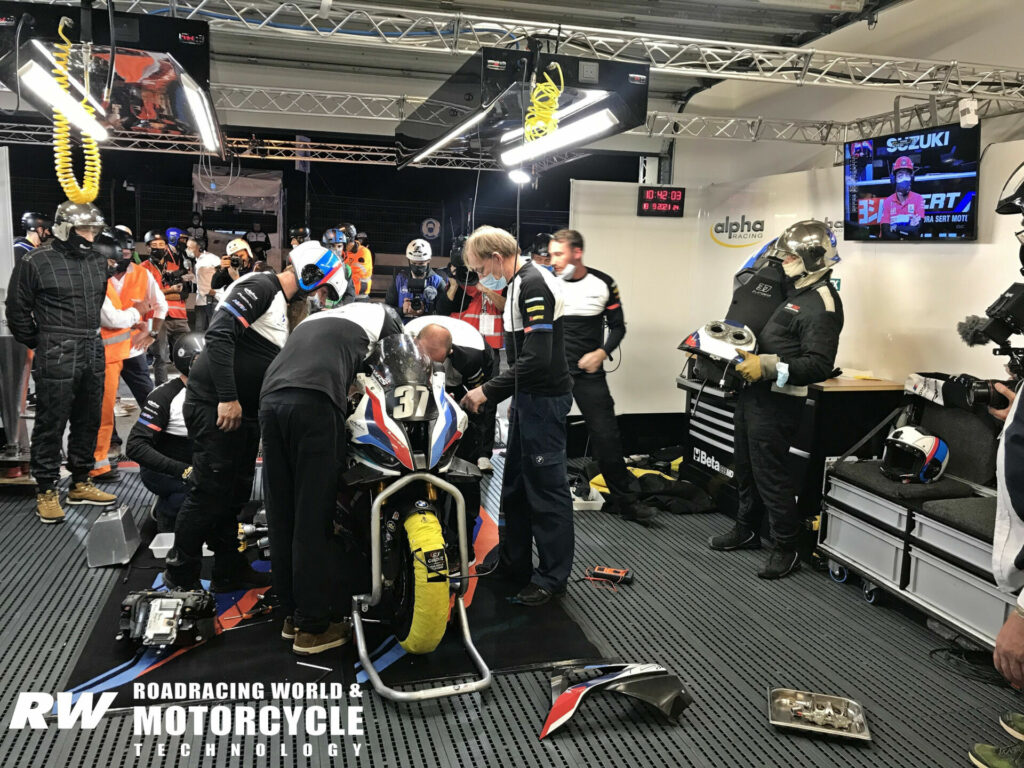
The end result reflects a massive amount of thought and effort to make the bike durable and fast. And sometimes it’s easy to wonder if it’s not overkill, especially if you are winning by 19 laps, as the factory Suzuki team did at the Bol. But when only 0.070 second after six hours of racing is the margin for your first win, as it was for the BMW squad at Most, it just proves that in racing, every little thing matters.
